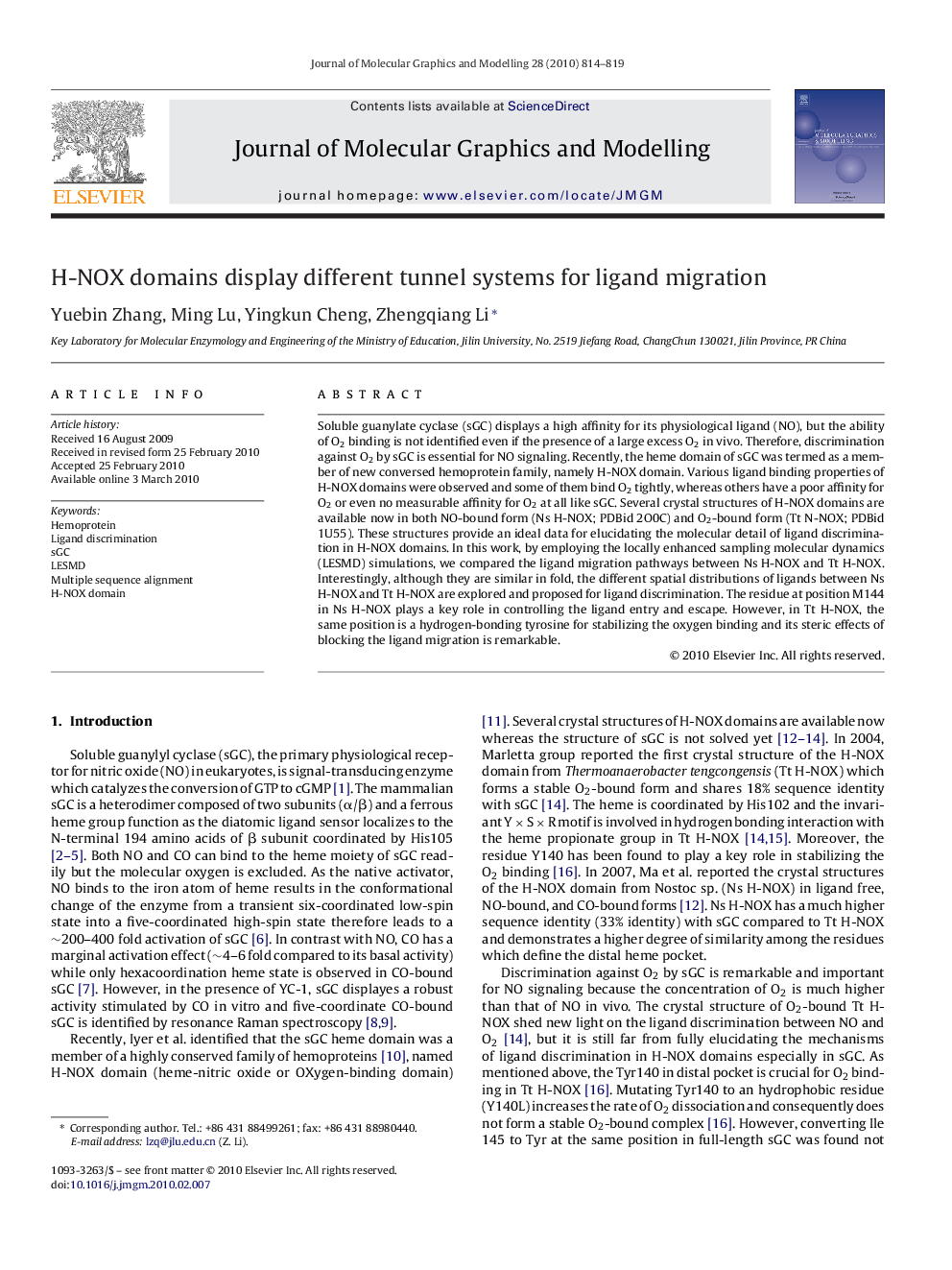| Article ID | Journal | Published Year | Pages | File Type |
|---|---|---|---|---|
| 443553 | Journal of Molecular Graphics and Modelling | 2010 | 6 Pages |
Soluble guanylate cyclase (sGC) displays a high affinity for its physiological ligand (NO), but the ability of O2 binding is not identified even if the presence of a large excess O2 in vivo. Therefore, discrimination against O2 by sGC is essential for NO signaling. Recently, the heme domain of sGC was termed as a member of new conversed hemoprotein family, namely H-NOX domain. Various ligand binding properties of H-NOX domains were observed and some of them bind O2 tightly, whereas others have a poor affinity for O2 or even no measurable affinity for O2 at all like sGC. Several crystal structures of H-NOX domains are available now in both NO-bound form (Ns H-NOX; PDBid 2O0C) and O2-bound form (Tt N-NOX; PDBid 1U55). These structures provide an ideal data for elucidating the molecular detail of ligand discrimination in H-NOX domains. In this work, by employing the locally enhanced sampling molecular dynamics (LESMD) simulations, we compared the ligand migration pathways between Ns H-NOX and Tt H-NOX. Interestingly, although they are similar in fold, the different spatial distributions of ligands between Ns H-NOX and Tt H-NOX are explored and proposed for ligand discrimination. The residue at position M144 in Ns H-NOX plays a key role in controlling the ligand entry and escape. However, in Tt H-NOX, the same position is a hydrogen-bonding tyrosine for stabilizing the oxygen binding and its steric effects of blocking the ligand migration is remarkable.
